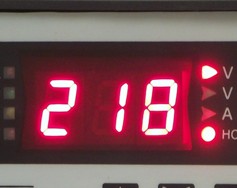Categories: Electrician at home, Books and video courses on electrical engineering and electronics
Number of views: 79337
Comments on the article: 28
All about voltage stabilizers (to help the home master)
A theoretical and practical guide for those who decide to install a voltage regulator in their home.
 First, introduce myself: my name is Alexander Anatolyevich Rumyantsev, I have been working in the electrical industry for more than 12 years, of which more than 8 years I communicate directly with voltage stabilizers. At the moment, I lead the company Santek, which represents the brand of voltage regulators SUNTEK on the market. During this time, before my eyes, there was a formation and decline of many companies, many brands of stabilizers appeared and disappeared. But each existing (or former) brand has left its mark on the Internet in the form of advertising articles and announcements.
First, introduce myself: my name is Alexander Anatolyevich Rumyantsev, I have been working in the electrical industry for more than 12 years, of which more than 8 years I communicate directly with voltage stabilizers. At the moment, I lead the company Santek, which represents the brand of voltage regulators SUNTEK on the market. During this time, before my eyes, there was a formation and decline of many companies, many brands of stabilizers appeared and disappeared. But each existing (or former) brand has left its mark on the Internet in the form of advertising articles and announcements.
A simple layman entering a query on voltage stabilizers in a search engine will immediately stumble upon eulogies and abusive speeches of all brands, a bunch of countries of manufacturers, and even with direct communication very often on the forums experienced managers, introducing themselves as ordinary users, will give you the "right" advice for buying.
This massive confusion is understandable - high competition does not tolerate pants sitting around waiting for calls, you need to spin as actively as possible, but the impression is of mass uniformity of all stabilizers, where the buyer is essentially presented only with a choice in price and appearance of the device. And this is not at all true. The main thing in the voltage regulator is its functional filling, its operating range, quality and type of execution. This work is devoted precisely to a detailed separation of the types of voltage stabilizers for the correct choice of rating and type of stabilizer.
What is a voltage regulator?
The voltage stabilizer is a converter of electrical energy that allows you to get the output voltage that is within the specified limits with significantly greater fluctuations in the input voltage and load resistance. A voltage stabilizer (regardless of type) is a device designed to protect equipment from unstable power supply and network failures. To maintain a stable 220 Volts for your devices, no matter how the input voltage changes, it is suitable for a voltage regulator.
The stabilizer is connected to a current source (perhaps this is an input to the house, cottage, etc.) at one end, and the other end is connected to the equipment. Input voltage is constantly monitored and checked regularly. An automatic voltage regulator does not require any human intervention, but regulates the voltage automatically whenever there is a voltage surge or there is an energy pulse that can reach the connected equipment.
Download e-book "All about voltage stabilizers (to help the home master)" you can here:
P.S. 23.09.2013 d. an updated version of the book "All about voltage stabilizers (to help the master self-taught)" was released. This is a theoretical and practical guide for those who decide to install a voltage regulator in their home.
Book's contents:
1. Start
2. What are we talking about?
3. Types of networks. Basic concepts.
4. Types of voltage stabilizers: a) relay b) electromechanical c) ferroresonant d) thyristor
5. Types of networks. Basic concepts.
6. Additional functions of stabilizers
7. Connection of voltage stabilizers
8. How to choose a voltage regulator
9. Examples of the correct selection of voltage regulator
You can download the second edition of the e-book "All About Voltage Stabilizers" here:
See also at electro-en.tomathouse.com
:
